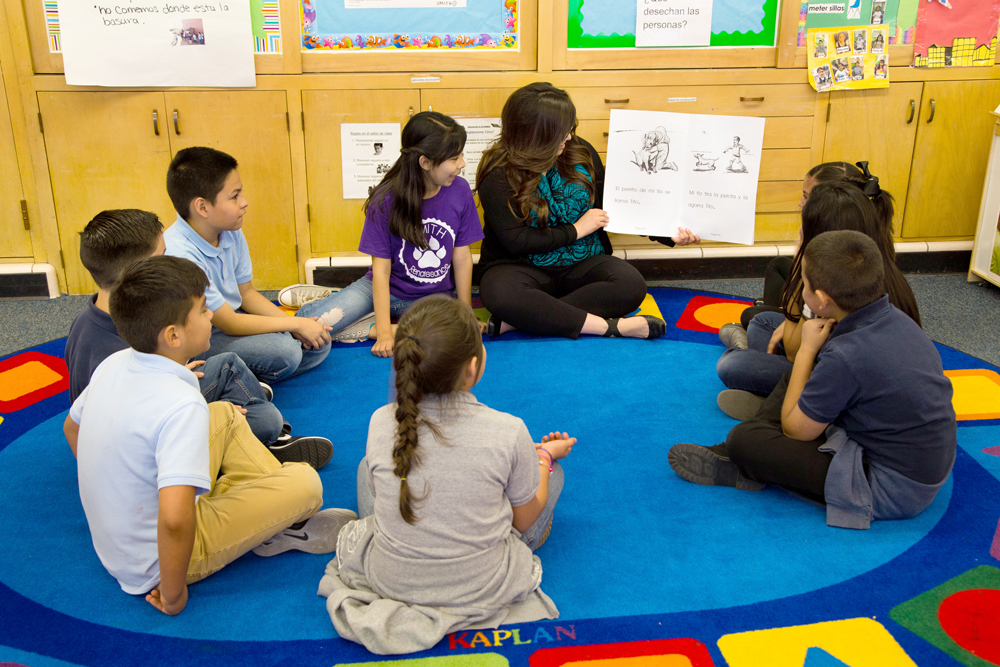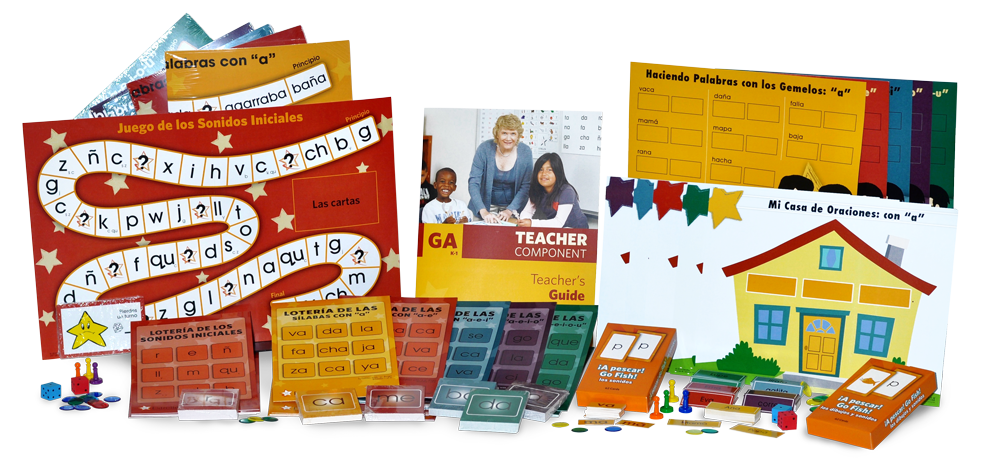Methodology
A Person Learns
to Read Once
Why Native Language
Instruction Works
The Estrellita Accelerated Beginning Spanish Reading Program supports native language instruction by providing early education bilingual teachers with a methodology and concrete strategies for teaching beginning Spanish reading to young children. This foundation in the primary language assists English Language Learners in achieving a successful and smooth transition to English.
Research has repeatedly shown that a child who learns to read in his primary language (L1) first has a greater degree of success in an English curriculum than does the child who does not. A person learns to read only once. The process of acquiring the necessary decoding skills to “break the code” is a learned process. These acquired skills transfer to the second language (L2) and do not have to be “relearned.”

The Estrellita® Program is Not a Translation from English
Some Spanish literacy programs are a direct translation of the English version, which is a recipe for disaster. Contrary to what people think, teaching Spanish literacy is different than teaching English literacy because the linguistic nature of the two languages is different. Some educational companies have attempted to teach Spanish phonics the same way they teach English phonics. This is based on an incorrect premise that literacy development in English and Spanish are the same or very similar.
Estrellita® Curriculum
by Appropriate Grade Level and Tiers
| Tier | PreK/TK | Kinder | 1st Grade | 2nd Grade | 3rd Grade | 4th Grade | 5th Grade |
|---|---|---|---|---|---|---|---|
| Tier 1 | PreK/TK | K1 | K1 Lunita | Lunita | |||
| Tier 2 | PreK/TK* | Escalera | Escalera Fugaces | Escalera Fugaces | Escalera Fugaces | Escalera Fugaces | Escalera Fugaces |
| Tier 3 | PreK/TK* | Escalera | Escalera Fugaces | Escalera Fugaces | Escalera Fugaces | Escalera Fugaces | Escalera Fugaces |
*Tier 2 and 3 students should only use the Estrellita curriculum as intervention if it is also being used as a Tier 1 curriculum.
The Importance of Blending in the Estrellita® Program
Estrellita utilizes a syllabic approach to blending and segmentation which systematically builds upon itself.
One of the key differences between Spanish and English literacy development is the onset-rime structure in English versus the syllable unit in Spanish. Beginning reading material in English is dominated by one-syllable words made of three letters (CVC), such as cap, hat, sun, tip, etc. Beginning English literacy instruction is built around the onset-rime structure in these one-syllable words (c-ap).
The situation is very different in Spanish, however. Research has indicated that the syllable is a more important unit of phonological awareness in Spanish than it is in English (Carreiras, Alvarez, and De Vega, 1993). Spanish is an alphabetic language with a regular and well-defined syllabic structure. Beginning literacy programs in Spanish must be built around the syllable unit.


Altogether Now!
Phonemic Awareness
Research on phonemic awareness in English indicates that it should be taught in the pre-reading stage, and in fact, is a precursor to learning to read (Adams, 1990). Research done in Mexico yields very different results (Vernon & Ferreiro, 1999, 2000). For Spanish-speaking students, phonemic and phonological awareness are not precursors to reading in Spanish, but are integral to the reading process and should be taught concurrently with reading and writing.
From the Known to the Unknown
Sound-to-Symbol Correspondence
With very few exceptions, there is a direct sound to symbol correspondence in Spanish. English does not have this direct correspondence. This makes the decoding process much easier to master in Spanish than in English.
Decoding the Research
Why No More "MA, ME, MI, MO, MU"?
Research has demonstrated that vowels are best taught before consonants in early Spanish reading instruction (Escamilla, 1999; Ferreiro, Pellicer, Rodríguez, Silva & Vernon, 1994). This is the direct opposite in English reading programs in which consonants are taught first. In Spanish, there are only five vowel sounds. General American English has about sixteen different vowel sounds, represented graphically by a myriad of numerous spellings. This presents one of the biggest obstacles for children learning to read in English, regardless of their language dominance. Children who learn to read in Spanish can more easily “break the code” because of this one-to-one letter correspondence.
Building Success
The Estrellita® Program Bridges the Gap to Literacy
Estrellita serves as a bridge to English, by laying a strong foundation in Spanish literacy that later leads to a more successful transition to English. Test results from many schools and districts using bilingual instruction indicate that children who have been through the Estrellita program in the primary grades are surpassing their English-only peers in English reading scores in later grades. Estrellita provides programs for K1, PreK, Newcomers, and Games and Activities for differentiated instruction. Additionally, Estrellita strongly encourages a systematic implementation process that includes Professional Development and Site Implementation to ensure a solid foundation and fidelity to the program.
